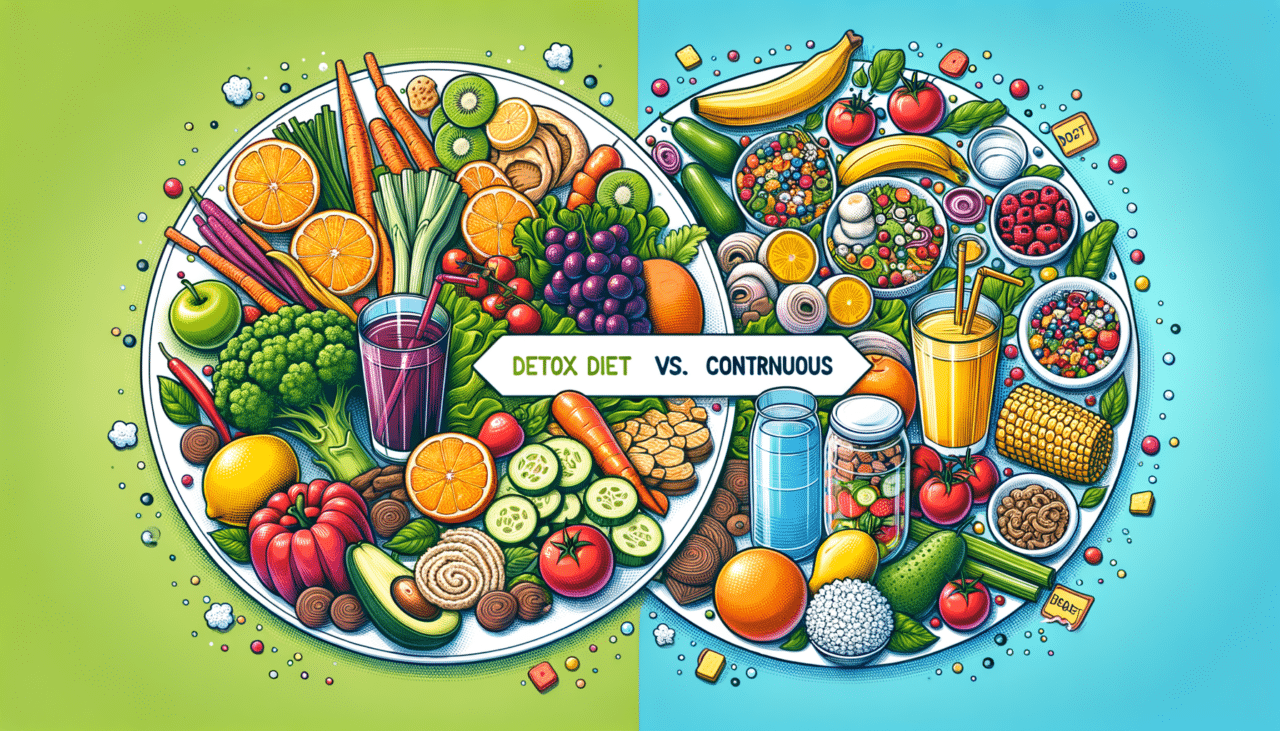In today’s health-conscious world, many individuals are exploring different dietary approaches to improve their well-being. Among the myriad options available, Regular Detox Diets and Continuous Eating have garnered significant attention. While both strategies promise health benefits, they cater to different aspects of nutrition and lifestyle. In this article, we will delve into the characteristics of each and provide a comprehensive comparison to help you make an informed choice.
Characteristics of Regular Detox Diets
Regular Detox Diets are designed to cleanse the body of toxins and impurities. These diets are typically short-term and involve consuming specific foods, beverages, or supplements to aid in the body’s natural detoxification processes. Here are some key features:
- Purpose: The primary goal is to remove toxins, improve digestion, and boost overall health.
- Duration: Typically lasts from a few days to a few weeks.
- Food Restrictions: Often involves eliminating processed foods, caffeine, alcohol, and refined sugars.
- Common Components: Includes juices, smoothies, herbal teas, and whole foods.
- Health Benefits: May lead to weight loss, increased energy, and improved skin health.
- Risks: Potential nutrient deficiencies if not well-planned, and may not be suitable for everyone.
Characteristics of Continuous Eating
Continuous Eating, often referred to as grazing, involves consuming small meals or snacks throughout the day instead of the traditional three large meals. This approach emphasizes a steady intake of nutrients and energy. Here are its main characteristics:
- Purpose: To maintain stable blood sugar levels, prevent overeating, and support sustainable energy.
- Duration: An ongoing lifestyle choice rather than a temporary diet.
- Meal Frequency: Typically involves eating every 2-3 hours.
- Food Choices: Focuses on balanced, nutrient-dense foods including lean proteins, whole grains, fruits, and vegetables.
- Health Benefits: May improve metabolism, reduce hunger pangs, and enhance cognitive function.
- Risks: Potential for overeating if portion control is not practiced, and may require more planning.
Comparative Table: Regular Detox Diets vs. Continuous Eating
| Feature | Regular Detox Diets | Continuous Eating |
|---|---|---|
| Purpose | Remove toxins and impurities | Maintain stable energy and nutrient intake |
| Duration | Short-term (days to weeks) | Long-term lifestyle |
| Food Restrictions | Eliminates processed foods, caffeine, alcohol | No specific restrictions, emphasis on balance |
| Common Components | Juices, smoothies, herbal teas, whole foods | Lean proteins, whole grains, fruits, veggies |
| Meal Frequency | Typically 3 main meals or specific detox juices | Every 2-3 hours |
| Health Benefits | Weight loss, increased energy, improved skin | Improved metabolism, reduced hunger pangs |
| Risks | Nutrient deficiencies, not suitable for everyone | Overeating, requires portion control |
Conclusion
Choosing between Regular Detox Diets and Continuous Eating largely depends on your personal health goals, lifestyle, and dietary preferences. Regular Detox Diets can be an effective short-term strategy for those seeking a quick reset or cleanse. However, they require careful planning to avoid nutrient deficiencies. On the other hand, Continuous Eating offers a sustainable approach to maintaining energy levels and preventing overeating, but it demands consistent portion control and planning.
Before embarking on either dietary approach, it is advisable to consult with a healthcare professional or a registered dietitian to ensure that the chosen method aligns with your health needs and goals.
Explore more dietary comparisons and make informed choices with our detailed reviews on CompareAnything.org.

Comments (0)
There are no comments here yet, you can be the first!